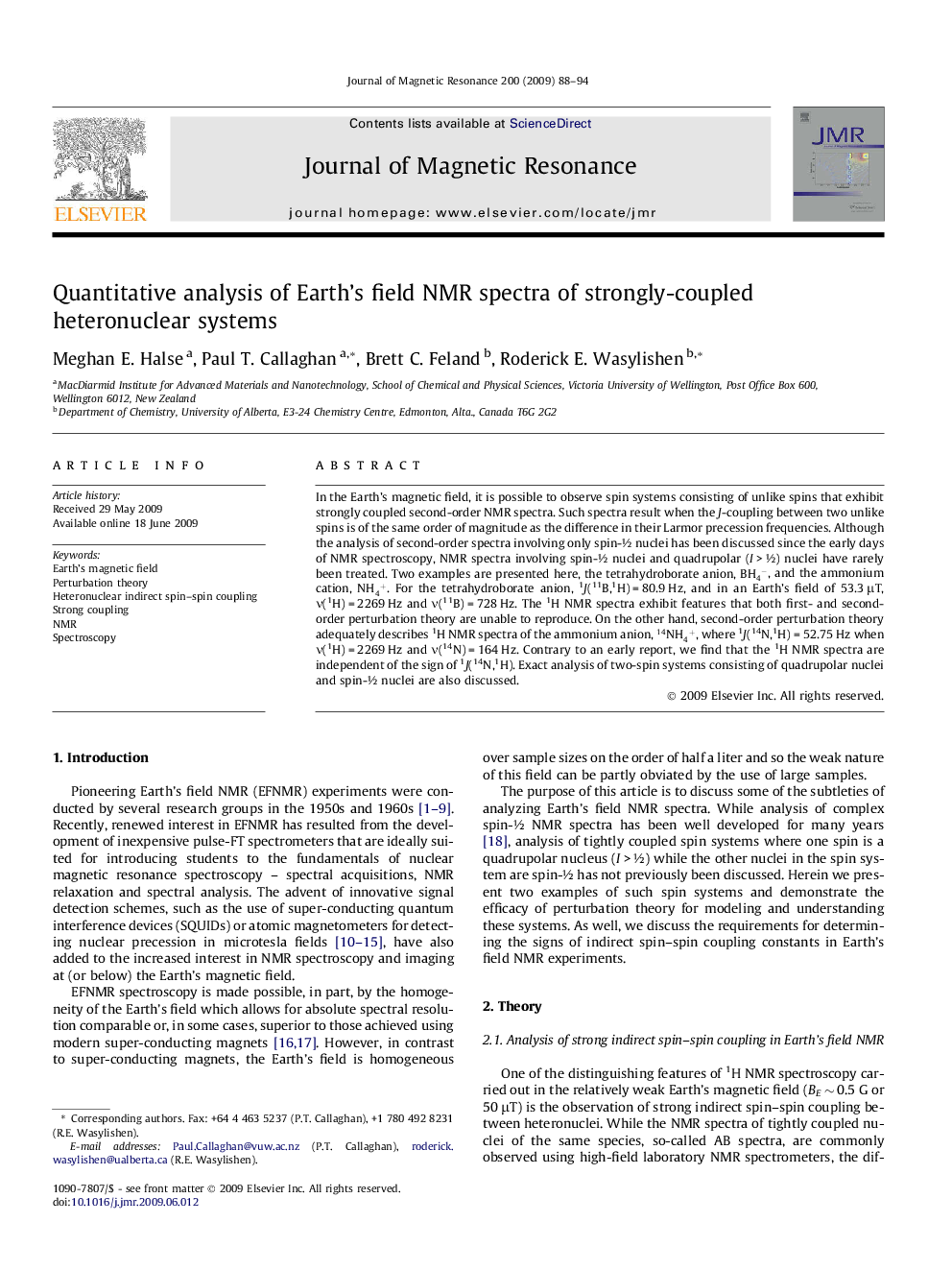| Article ID | Journal | Published Year | Pages | File Type |
|---|---|---|---|---|
| 5406870 | Journal of Magnetic Resonance | 2009 | 7 Pages |
Abstract
In the Earth's magnetic field, it is possible to observe spin systems consisting of unlike spins that exhibit strongly coupled second-order NMR spectra. Such spectra result when the J-coupling between two unlike spins is of the same order of magnitude as the difference in their Larmor precession frequencies. Although the analysis of second-order spectra involving only spin-½ nuclei has been discussed since the early days of NMR spectroscopy, NMR spectra involving spin-½ nuclei and quadrupolar (I > ½) nuclei have rarely been treated. Two examples are presented here, the tetrahydroborate anion, BH4-, and the ammonium cation, NH4+. For the tetrahydroborate anion, 1J(11B,1H) = 80.9 Hz, and in an Earth's field of 53.3 μT, ν(1H) = 2269 Hz and ν(11B) = 728 Hz. The 1H NMR spectra exhibit features that both first- and second-order perturbation theory are unable to reproduce. On the other hand, second-order perturbation theory adequately describes 1H NMR spectra of the ammonium anion, 14NH4+, where 1J(14N,1H) = 52.75 Hz when ν(1H) = 2269 Hz and ν(14N) = 164 Hz. Contrary to an early report, we find that the 1H NMR spectra are independent of the sign of 1J(14N,1H). Exact analysis of two-spin systems consisting of quadrupolar nuclei and spin-½ nuclei are also discussed.
Related Topics
Physical Sciences and Engineering
Chemistry
Physical and Theoretical Chemistry
Authors
Meghan E. Halse, Paul T. Callaghan, Brett C. Feland, Roderick E. Wasylishen,
